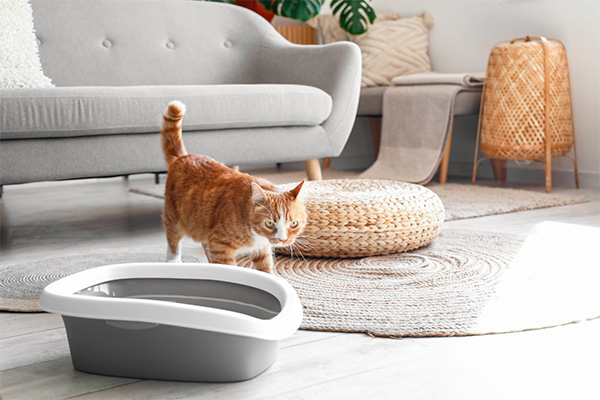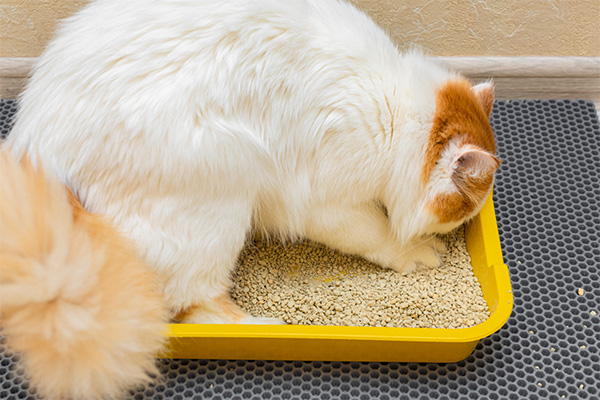Navigating the cat care world, one often overlooked but crucial aspect is determining the optimal number of litter boxes in a household. This isn't just about convenience; it's fundamental to feline welfare and household harmony. Finding the right number of litter boxes for your furry family is a key puzzle piece that often goes unnoticed. It goes beyond mere numerical considerations; it involves delving into the mindset of your feline companions.
In this article, we'll explore the crucial question of how many litter boxes you should have in your household and the rationale behind this number. Additionally, we'll delve into the potential problems that may arise if you don't have the appropriate number of litter boxes for your feline friends.
How Many Litter Boxes Per Cat?
The general rule of thumb, often endorsed by veterinarians and cat behaviorists, is the "n+1" formula, where 'n' represents the number of cats. This implies that you should provide one litter box per cat and one more litter box. For one cat, it is recommended to have two litter boxes; for two cats, three litter boxes, and so forth. This rule helps ensure that each cat has access to a clean litter box at all times, which can reduce stress, prevent behavioral issues, and maintain good hygiene.
Extra litter boxes provide a backup option for your cat in case one box is dirty or occupied by another cat, which is especially important in multi-cat households where territorial issues or preferences for certain boxes can arise. Cats, known for their particular nature, may prefer different boxes for urination and defecation or simply having a backup. It is advantageous for households with multiple floors to place a litter box on each level, guaranteeing convenient access for your cat at all times. Balancing spatial aesthetics with your cat's natural instincts and finding the right number of litter boxes is key to a happy, odor-free home and a content, well-adjusted feline.

Where To Place Litter Boxes Around The House
When deciding where to place litter boxes in your home, including in small apartments, there are several key factors to consider for your cat's comfort and convenience. First, choose quiet and private areas away from high-traffic and noisy spaces, as cats prefer a peaceful environment for their litter needs. It's also crucial to ensure the litter box is easily accessible (especially for an elderly cat) and not in a location where the path can be blocked or feel too enclosed. Keep litter boxes away from your cat's food and water bowls, as cats generally dislike eating near their elimination area.
In larger homes, having litter boxes in different locations, possibly one litter box on each floor can provide your cat with convenient options. While privacy is important, place the litter box where it's visible for easy cleaning and maintenance. In small apartments, look for underutilized spaces or corners where a litter box can be discreet yet accessible. Furniture that doubles as a litter box enclosure can be a space-saving solution. If you have a safely enclosed balcony or a bathroom that's consistently accessible to your cat, these can also be suitable locations.
Remember, each cat has unique preferences, so you might need to experiment with different spots to find the best fit. Observing your cat's behavior will help you determine the most comfortable and practical locations for litter boxes in your home.
Signs Of Not Enough Litter Boxes
Accidents Outside the Litter Box
When a cat starts using areas outside the litter box for elimination, it's often a sign that they're not satisfied with their current litter box situation. This could be due to the box being dirty, occupied, or in an undesirable location. Providing more litter boxes can give your cat alternatives and reduce the likelihood of accidents.
Territorial Behavior
In homes with multiple cats, we recommend that you track your cat's litter box behavior. Be vigilant for indications of cats guarding the litter box or hindering others from its use. This behavior can lead to stress and conflicts among cats, and adding more litter boxes can alleviate territorial disputes by giving each cat their own space.
Overcrowding
If you notice that the litter boxes are consistently being used simultaneously, leading to a queue or causing a cat to avoid the box, it clearly indicates that more boxes are needed. Cats prefer not to use an already occupied box, and overcrowding can be stressful.

Dirty Litter Boxes
Cats are inherently clean creatures and may avoid a litter box if it becomes too dirty, especially with clumping litter, as it can get saturated quickly. Pet owners should at least clean the litter box daily, depending on the types of cat litter used. If you notice that the litter boxes with clumping litter are becoming soiled faster than you can manage to clean them, it's a sign to consider adding more boxes. More litter boxes mean the usage is spread out, helping to keep each box cleaner for a longer period and accommodating your cats' preference for cleanliness.
Behavioral Changes
Be attentive to any changes in how your cat uses the litter box. If they seem hesitant, try to dig in other areas, or show signs of discomfort or stress near the litter box, such as peeing outside of the litter box, it could be a signal that they need more options or a different setup.
Health Issues
Stress from inadequate litter box arrangements can contribute to cat health problems, such as urinary tract infections. Cats may hold their urine longer than they should if they're uncomfortable with the litter box situation, leading to health complications.
